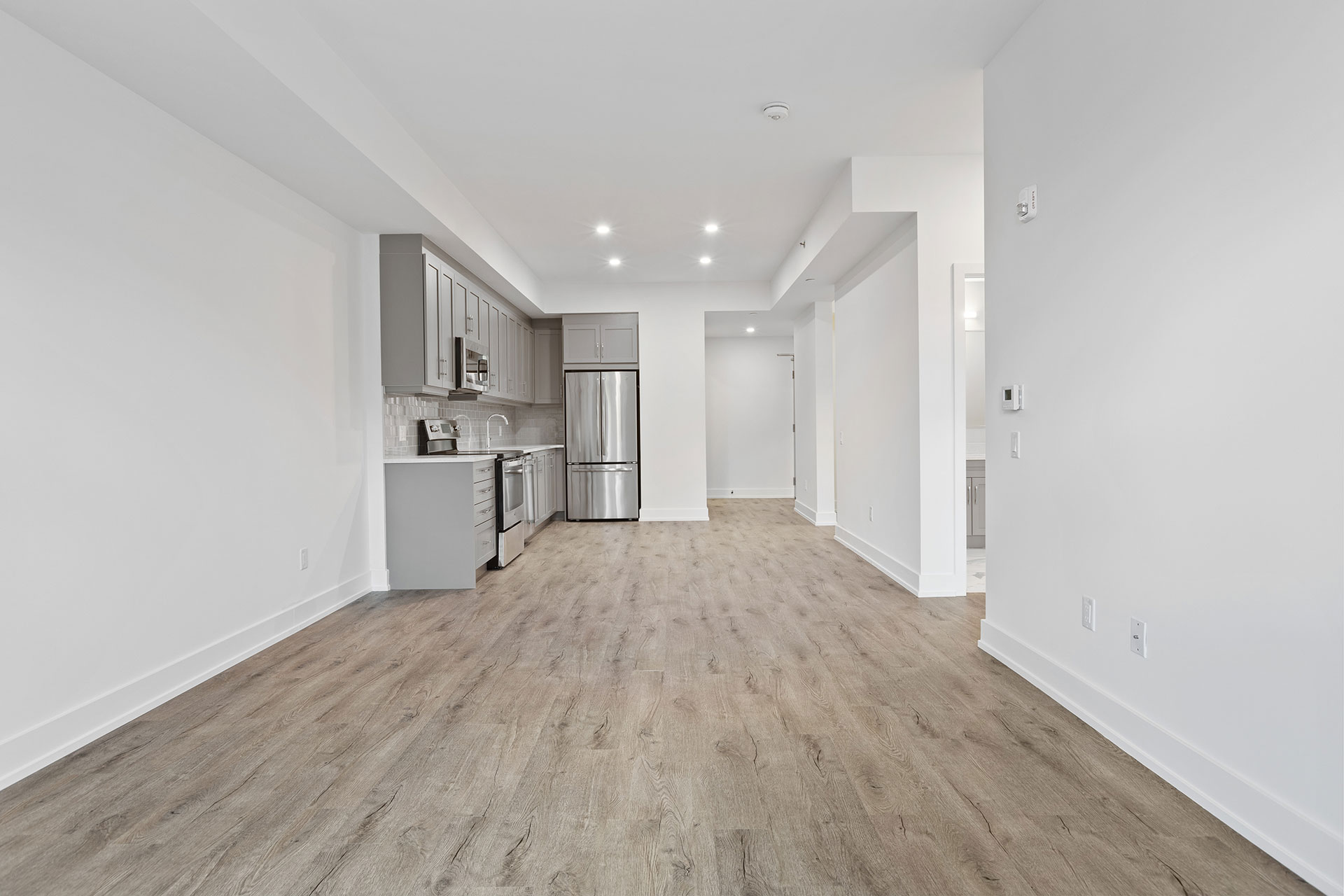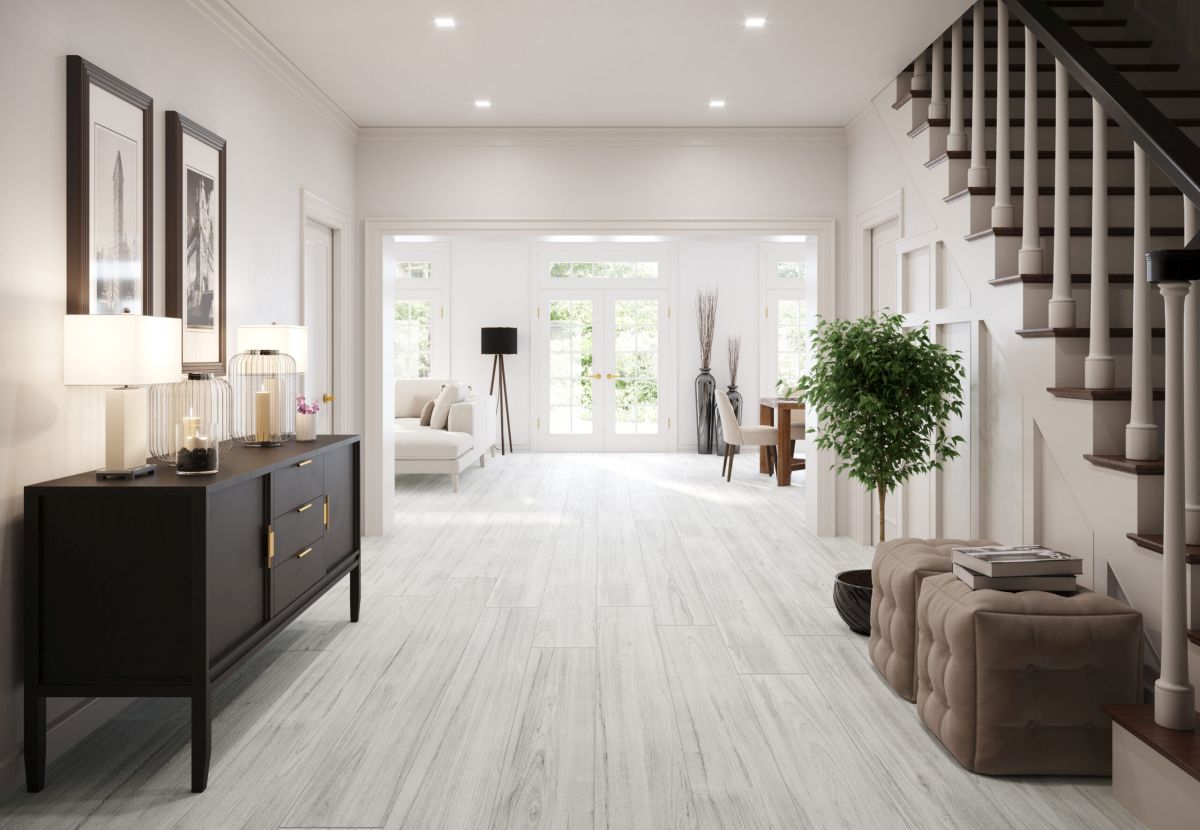White flooring can bring a sense of elegance, brightness, and sophistication to any space. Whether you are renovating your home or designing a new one, understanding the different types of white flooring, selecting the perfect option for your needs, and knowing how to properly maintain it are essential factors to consider. In this blog post, we will delve into the world of white flooring, exploring the various types available, providing tips on selecting the perfect option, discussing the installation process, and offering advice on how to effectively clean and maintain white flooring to keep it looking pristine for years to come. So, let’s dive in and discover the beauty and practicality of white flooring.
Introduction to White Flooring: Enhancing Aesthetics and Brightness
White flooring has become increasingly popular in interior design due to its ability to enhance aesthetics and create a sense of brightness in any space. The clean and timeless appeal of white flooring can instantly transform a room, making it appear more spacious, airy, and inviting. Whether you prefer the natural warmth of white hardwood, the affordability of white laminate, the sleekness of white tile, or the versatility of white vinyl, understanding the unique characteristics and benefits of each type is crucial for making an informed decision that will suit your personal style and practical needs. In this section, we will explore the reasons why white flooring is a popular choice, highlighting its ability to elevate the overall look and feel of your home while creating a visually stunning and harmonious atmosphere.
Types of White Flooring
When it comes to white flooring, there are several types to choose from, each with its own unique features and benefits. Understanding the characteristics of each type will help you make an informed decision based on your preferences, budget, and the specific requirements of your space. In this section, we will explore the different types of white flooring, including white hardwood, white laminate, white tile, and white vinyl, providing an in-depth look at their attributes, pros, and cons. By the end of this section, you will have a comprehensive understanding of the various options available, allowing you to select the perfect white flooring for your home.
Selecting the Perfect White Flooring
Selecting the perfect white flooring for your space involves considering various factors such as the room’s function, durability needs, home decor, and your budget. In this section, we will guide you through the decision-making process, providing valuable tips and insights to help you make an informed choice.
Consider the Room’s Function
Before choosing white flooring, it’s essential to consider the function of the room where it will be installed. For high-traffic areas like entryways, hallways, and kitchens, you may want to opt for more durable options such as white tile or vinyl flooring that can withstand heavy foot traffic and resist stains. On the other hand, for bedrooms or living rooms where comfort is a priority, white hardwood or laminate flooring can create a cozy and inviting atmosphere.
Evaluate Durability Needs
Durability is a crucial factor to consider when selecting white flooring, as it should be able to withstand the demands of your lifestyle. If you have children or pets, you may want to choose a flooring material that is scratch-resistant and easy to clean. White laminate or vinyl flooring often offer excellent durability and resistance to wear and tear. However, if you prefer the natural beauty of wood, white hardwood with a durable finish can also be a suitable choice.
Match with Home Decor
To achieve a cohesive and visually pleasing aesthetic, it’s important to consider how the white flooring will complement your existing home decor. Take note of your furniture, wall colors, and overall design style. For a modern and minimalist look, white tile or vinyl flooring can provide a sleek and clean appearance. If you prefer a more traditional or rustic style, white hardwood or laminate with natural wood grain patterns can add warmth and character to the space.
Budget Considerations
Another crucial aspect of selecting white flooring is your budget. Different types of white flooring come with varying price ranges, so it’s important to set a budget and explore options within that range. While white hardwood flooring may be more expensive, it offers timeless beauty and can increase the value of your home. On the other hand, white laminate or vinyl flooring can provide a cost-effective alternative without compromising on style and durability.
By carefully considering the room’s function, evaluating durability needs, matching with your home decor, and factoring in your budget, you can confidently select the perfect white flooring that meets both your aesthetic preferences and practical requirements.
Installing White Flooring
Installing white flooring requires careful preparation and consideration. Whether you choose to hire a professional or tackle the installation process yourself, it is important to understand the necessary steps and techniques involved to ensure a successful and long-lasting result. In this section, we will guide you through the process of installing white flooring, covering topics such as preparation, professional installation versus DIY, and the actual installation process.
Preparation for Installation
Before installing white flooring, proper preparation is key to achieving a smooth and flawless finish. This includes ensuring that the subfloor is clean, dry, and level. Any existing flooring should be removed, and any necessary repairs or adjustments made to the subfloor. Additionally, acclimating the white flooring to the room’s temperature and humidity levels is crucial to prevent issues such as warping or buckling.
Professional Installation versus DIY
Deciding whether to hire a professional or undertake the installation yourself depends on your level of expertise, time availability, and the complexity of the project. While hiring a professional ensures a high-quality installation, it can be more costly. On the other hand, DIY installation can save you money but requires careful attention to detail and adherence to installation guidelines provided by the manufacturer.
Installation Process
The installation process varies depending on the type of white flooring chosen. Each type may have specific installation methods and requirements. For white hardwood flooring, installation typically involves nailing or gluing the planks to the subfloor. White laminate flooring often utilizes a click-and-lock system that allows the planks to be easily interlocked. White tile flooring requires careful placement and adhesive application to create a seamless and durable result. White vinyl flooring can be installed using either a glue-down or floating method.
Understanding the specific installation process for your chosen type of white flooring is crucial to ensure proper installation and a beautiful end result. Following the manufacturer’s instructions and utilizing the appropriate tools and techniques will help you achieve a professional-looking installation.
By adequately preparing the subfloor, considering whether to hire a professional or install the white flooring yourself, and following the specific installation guidelines for your chosen type of flooring, you can successfully install white flooring that adds beauty and functionality to your space.
Maintaining and Cleaning White Flooring
Proper maintenance and regular cleaning are essential for preserving the beauty and longevity of white flooring. White floors can be susceptible to dirt, stains, and scratches, so understanding the right techniques and products to use is crucial. In this section, we will provide you with valuable tips and strategies for maintaining and cleaning your white flooring, ensuring that it remains pristine and attractive for years to come.
Routine Cleaning Tips
Regular cleaning is key to keeping your white flooring looking its best. Start by sweeping or vacuuming the floor to remove any loose dirt and debris. Use a soft-bristle brush or microfiber mop to prevent scratching the surface. For more thorough cleaning, damp mop the floor using a mild detergent or a manufacturer-recommended cleaner. Avoid using harsh chemicals or abrasive cleaners, as they can damage the finish of your white flooring. Additionally, promptly clean up any spills or stains to prevent them from settling into the floor and causing discoloration.
Dealing with Stains and Scratches
White flooring is more prone to showing stains and scratches, so it’s important to address them promptly. For light stains, gently clean the affected area with a soft cloth and a mild cleaning solution. For tougher stains, such as red wine or ink, consult the manufacturer’s guidelines or seek professional advice. To minimize the appearance of scratches, use area rugs or furniture pads to protect the floor from furniture legs or heavy objects. For deeper scratches, consider using a touch-up kit or seeking professional assistance to repair and refinish the affected area.
Long-Term Maintenance
In addition to routine cleaning, there are some long-term maintenance practices that can help extend the lifespan of your white flooring. Avoid dragging heavy furniture across the floor, as it can cause scratches or indentations. Use felt pads or furniture glides under the legs of your furniture to prevent damage. Place doormats at entryways to minimize the amount of dirt and debris that is tracked onto the floor. It is also advisable to periodically check and reseal your white flooring, especially if it is made of materials like tile or hardwood, to maintain its protective barrier and shine.
By following these maintenance and cleaning tips, you can ensure that your white flooring remains in excellent condition, preserving its pristine appearance and enhancing the beauty of your space for years to come.

